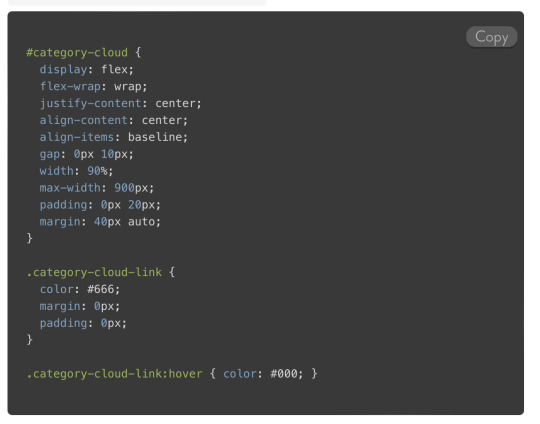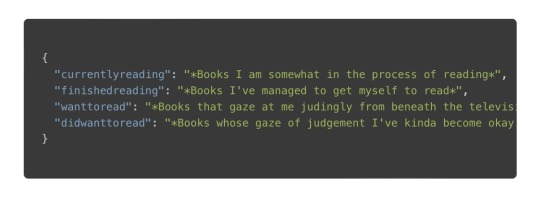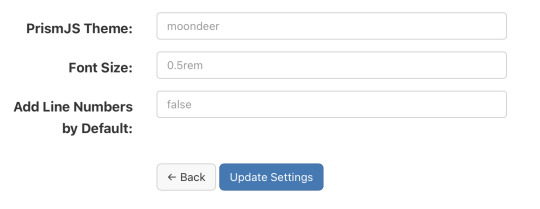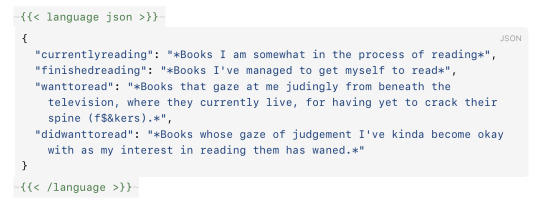#PureScript
Explore tagged Tumblr posts
Text
i wanna make an anki clone. anki was basically made with typescript and rust. im learning purescript and go. do you see the parity here
#also apparently you can have purescript target go for compiling instead of c++#and go has a built in package for html. which means i can just use htmx
26 notes
·
View notes
Text
Hidden iPhone Features You Didn’t Know About

Discovering New iPhone Tricks
If you want to know what is in the latest iPhone But not all are obvious. Others are buried, for you to unearth. You miss lots of useful tools. Did a friend ever teach you something on your phone? That 'wow' moment can strike once more. In no particular order, here are […] 5 Power Features of the PureScript Data API Im sure you already know a few advantages and challenges which come from working with the local store.
Unlocking Hidden Controls
Photo: Your iPhone's control centre has a few secrets of its own. Did you try the back tap feature? It’s easy to set up. Use a smartphones back to ignite events. Make it open the camera/ take a screenshot. If you want another trick, use your voice: All you have to do is say “Hey Siri” and tell her to read your most recent texts. Not only does this avoid mess, but it can also keep you hands-free saving time. You must hope that both will help you in your daily life.
Enhancing Your Everyday Life
So do you actually use the health related features on your phone? More than just the steps, as with any new iPhone It also tracks your sleep and heart activity. This keeps you healthy. You can programmatically customize your own alarm based on sleeping goal. The phone will tell you to get ready for bed. Focus mode is another feature. It helps you stay on task. Keep it on, but also keep limits of the notifications that come in while at work. Although minor, these should assist in making daily life more successful.
Find USABizInfo: Finally, A Complete Directory Of USA Contacts in one of
For a list of contacts direct in the USA use USABizInfo Directory. With a vast range of listings, this resource guarantees you with the precise contacts for different industries and regions across United States. If you are looking for business contacts, customer service telephone numbers or a company information - USABizInfo is the right place to go. With its extensive database and easy interface, you can search for the best details in their contact information that suitemost to your needs. Start unearthing advanced US Business Data with our USABizInfo directory, quickly.
1 note
·
View note
Text
Day 100
This is the final day of my #100DaysOfCode challenge. I didn’t finish the chapter 6. But I will continue reading the book. I was wondering if I will include this in an other #100DaysOfCode ( round 2). But, I decided to do only one #100DaysOfCode challenge a year. So, I will continue learning ( of course ), but I get to find a way to report or to summarize my learning. I don’t now if I will use #thumblr for that or something else. But, I think, tomorrow I will define the rules and specify the tools, that I am going to use during this period.
1 note
·
View note
Photo

TypeScript vs PureScript ☞ http://dev.edupioneer.net/e421f043e7 #TypeScript #PureScript
0 notes
Text
STOP talking shit about different programming languages
Haskell is ELEGANT
Rust is FAST
PureScript is BEST-IN-CLASS
J is FUN
Go
Lisp is AHEAD OF ITS TIME
https://twitter.com/vamchale/status/1168976308610748422
61 notes
·
View notes
Text
PureScript's traverse with arrays
So, a couple of days ago I was shocked to discover this nonsense:

How exactly does traverse work, that this is the result? Let's investigate.
At first I tried to reason about it by myself. traverse's type looks like this:

On the one hand, both the type returned by the lambda, m b, and the type returned by the traverse itself, m (t b), are Applicatives. On the other hand, the type of the second argument of traverse, t a, and the type contained in the resulting Applicative, t b, are both Traversables. Which means that the relationship between the arrays is as follows:

The first thing I did was to look at smaller arrays in order to understand how they are traversed over:


And while I kind of see the pattern, I couldn't come up with a precise combination of pure, apply/<*>, foldl or foldr, and map/<$> to recreate the same effect, so I just gave up and searched for the source code. The source code of traverse for arrays relies on a JavaScript implementation:



From what I can understand, this is what happens: (1) the function that is traverse's first argument gets called with the first element of the array: f(array[bot]); (2) the result is mapped into an Applicative with a function constructing an array of n elemens: e.g. map(array2)(_); (3) if the Apllicative returned by the map wraps a function, it is then apply'd with the next element of the array: e.g. apply(_)(f(array[bot + 1])); (4) to logarithmically reduce the number of recursive calls arrays of length more than 3 are processed as 2 halves which are then concat[enat]ed. Let's illustrate the steps with traverse (\x -> [x, 0]) [1, 2, 3]:

I think, the weird result produced by traverse boiles down to how apply/<*> works with arrays by looping over both of them and calling each function with each value:

And here's the source code, where this looping behaviour is defined:


For comparison, here's what we get if we use a list as traverse's second argument:

And here's the implementation:

My brain is too tired to think and write about this too now, so here's where I end this post.
0 notes
Text
plugin-prismjs (A README Experience)
A plugin for Micro.blog that injects Prism Javascript and CSS stylesheets to enable syntax highlighting for a sh$t ton of grammars within inline <code> tags and <pre><code> combination code blocks. Its code lives here.
Prism looks for <code class="language-xxx"> tags for inline syntax highlighting and for <pre><code class="language-xxx"> tags for syntax highlighting blocks of code.
For example, the opening tags for the following would be <pre><code class="language-ebnf">:

The configuration for the Javascript that lives at static/assets/js/prism.js is captured by its monster opening comment block:
/* PrismJS 1.25.0 https://prismjs.com/download.html#themes=prism&languages=markup+css+clike+javascript+abap+abnf+actionscript+ada+agda+al+antlr4+apacheconf+apex+apl+applescript+aql+arduino+arff+asciidoc+aspnet+asm6502+asmatmel+autohotkey+autoit+avisynth+avro-idl+bash+basic+batch+bbcode+bicep+birb+bison+bnf+brainfuck+brightscript+bro+bsl+c+csharp+cpp+cfscript+chaiscript+cil+clojure+cmake+cobol+coffeescript+concurnas+csp+coq+crystal+css-extras+csv+cypher+d+dart+dataweave+dax+dhall+diff+django+dns-zone-file+docker+dot+ebnf+editorconfig+eiffel+ejs+elixir+elm+etlua+erb+erlang+excel-formula+fsharp+factor+false+firestore-security-rules+flow+fortran+ftl+gml+gap+gcode+gdscript+gedcom+gherkin+git+glsl+gn+go+graphql+groovy+haml+handlebars+haskell+haxe+hcl+hlsl+hoon+http+hpkp+hsts+ichigojam+icon+icu-message-format+idris+ignore+inform7+ini+io+j+java+javadoc+javadoclike+javastacktrace+jexl+jolie+jq+jsdoc+js-extras+json+json5+jsonp+jsstacktrace+js-templates+julia+keepalived+keyman+kotlin+kumir+kusto+latex+latte+less+lilypond+liquid+lisp+livescript+llvm+log+lolcode+lua+magma+makefile+markdown+markup-templating+matlab+maxscript+mel+mermaid+mizar+mongodb+monkey+moonscript+n1ql+n4js+nand2tetris-hdl+naniscript+nasm+neon+nevod+nginx+nim+nix+nsis+objectivec+ocaml+opencl+openqasm+oz+parigp+parser+pascal+pascaligo+psl+pcaxis+peoplecode+perl+php+phpdoc+php-extras+plsql+powerquery+powershell+processing+prolog+promql+properties+protobuf+pug+puppet+pure+purebasic+purescript+python+qsharp+q+qml+qore+r+racket+cshtml+jsx+tsx+reason+regex+rego+renpy+rest+rip+roboconf+robotframework+ruby+rust+sas+sass+scss+scala+scheme+shell-session+smali+smalltalk+smarty+sml+solidity+solution-file+soy+sparql+splunk-spl+sqf+sql+squirrel+stan+iecst+stylus+swift+systemd+t4-templating+t4-cs+t4-vb+tap+tcl+tt2+textile+toml+tremor+turtle+twig+typescript+typoscript+unrealscript+uri+v+vala+vbnet+velocity+verilog+vhdl+vim+visual-basic+warpscript+wasm+web-idl+wiki+wolfram+wren+xeora+xml-doc+xojo+xquery+yaml+yang+zig&plugins=line-numbers+toolbar+copy-to-clipboard */
The functionality of the page was spotty, but the following link oughta load that monster configuration up there into the Prism Download Page .
I threw in the copy to clipboard plugin (which is dependent on the toolbar plugin) for that little copy button:

I also include the line numbers plugin. It looks for tags that include a line-numbers class.
For example, the opening tags for this code might be <pre><code class="language-json">:

Or, you could toss in the line-numbers class, kinda like <pre class="line-numbers"><code class="language-json">:

I have noticed that the line number appearance can be kinda spotty as far as alignment. The problem seems to lie somewhere in the CSS. The HTML DOM contains the correct number of generated <span> tags to represent the lines.
Let’s check out the plugin parameters, shall we?

Alrighty, first up is the theme. I rolled my own darcula-esque them and named it moondeer. This what you see above and get by default. I included the stylesheets for all the themes that were available on the download page as well. All the stylesheets live at static/assets/css/prism-STYLE.css. So the out of the box theme lives at static/assets/css/prism-moondeer.css.
If you want to play around with the themes, these would be the supported parameter values: moondeer, default, dark, coy, funky, okaidia, solarized-light, twilight, tomorrow-night.
The stylesheet living at static/assets/css/prism.css addresses a line-number spacing issue I ran into.
So, the Font Size parameter gets inserted into the partial injected into the page <head>. Rather than maintain a bunch of stylesheets (and in order to parameterize it), I chose to set the size here and slap on !important.
I also chose to inject the Javascript here, figuring it would cut down on repainting highlighted text over the original input.
{{ $theme := site.Params.prismjs_theme | default "moondeer" }} <link rel="stylesheet" href="/assets/css/prism-{{ $theme }}.css"> <script src="/assets/js/prism.js"></script> {{ $font_size := site.Params.prismjs_font_size | default "0.5rem" }} <style>code[class*=language-],pre[class*=language-] { font-size: {{ $font_size }} !important; }</style>
Lastly, the Line Numbers parameter. This parameter only makes since for one reason … the cool f$&king shortcode I layed in there. It lives at layouts/shortcodes/language.html.
{{- $language := false -}} {{- if (and (and .IsNamedParams (.Get "language")) .Inner) -}} {{- $language = .Get "language" -}} {{- else if (and (.Get 0) .Inner) -}} {{- $language = .Get 0 -}} {{- end -}} {{ if $language }} {{- $code := .Inner | markdownify | chomp -}} {{- if hasPrefix $code "<pre><code>" -}} {{- $code = strings.TrimPrefix "<pre><code>" $code | strings.TrimSuffix "</code></pre>" -}} {{- $code = htmlUnescape $code -}} {{- $code = replaceRE "<" "<" $code -}} {{- $code = replaceRE "&" "&" $code -}} {{- $pre_class := "code-block" -}} {{- if (and .IsNamedParams (.Get "line-numbers")) -}} {{- $pre_class = printf "%s line-numbers" $pre_class -}} {{ else if (and (not .IsNamedParams) (and site.Params.prismjs_line_numbers (eq "true" site.Params.prismjs_line_numbers))) }} {{- $pre_class = printf "%s line-numbers" $pre_class -}} {{- end -}} <pre class="{{ $pre_class }}"><code class="language-{{ $language }}"> {{ printf "%s" $code | htmlUnescape | safeHTML }} </code></pre> {{ else if hasPrefix $code "<code>" }} {{ $code = strings.TrimPrefix "<code>" $code | strings.TrimSuffix "</code>" }} {{ $code = htmlUnescape $code }} {{ $code = replaceRE "<" "<" $code }} {{ $code = replaceRE "&" "&" $code }} <code class="language-{{ $language }}"> {{ printf "%s" $code | htmlUnescape | safeHTML }} </code> {{ end }} {{ end }}
The paired shortcode works with either a single, unnamed parameter specifying the language … kinda like…
{{< language json >}} { "currentlyreading": "*Books I am somewhat in the process of reading*", "finishedreading": "*Books I've managed to get myself to read*", "wanttoread": "*Books that gaze at me judingly from beneath the television, where they currently live, for having yet to crack their spine (f$&kers).*", "didwanttoread": "*Books whose gaze of judgement I've kinda become okay with as my interest in reading them has waned.*" } {{< /language >}}
or with named parameters … one mandatory and one optional. The mandatory named parameter is language and the optional parameter is line-numbers. This might look something like…
{{< language language="json " line-numbers="true" >}} { "currentlyreading": "*Books I am somewhat in the process of reading*", "finishedreading": "*Books I've managed to get myself to read*", "wanttoread": "*Books that gaze at me judingly from beneath the television, where they currently live, for having yet to crack their spine (f$&kers).*", "didwanttoread": "*Books whose gaze of judgement I've kinda become okay with as my interest in reading them has waned.*" } {{< /language >}}
The Line Numbers plugin parameter contols shortcode behaviour when left unspecified. This value defaults to false. If you set it to "true", than invoking the unnamed parameter shortcode would result in a code block decorated with line numbers. The value set (or not set) for Line Numbers also controls the inclusion of line numbers when the named parameter language is used without supplying a line-numbers parameter to the shortcode. Supplying the value "true" for line-numbers oughta enable line numbers for a block of code being sent through the shortcode. And with that, the over-explanation of the Line Numbers parameter is complete.
Like nearly all my shortcodes these days, I created it as bridge between Ulysses and my Micro.blog content. So, I can be all working up a sheet in Ulysses, and be all:

and then it comes out the other side all:

It’s worth noting that I believe I have found a mobile Safari bug that affects the font-size of the highlighted text on an iPhone when in portrait. Your mileage may vary; but, this was my experience.
0 notes
Text
Flame: A PureScript front-end framework inspired by the Elm architecture
https://github.com/easafe/purescript-flame Comments
0 notes
Text
May 3, 2018
Ethereum News and Links
Protocol
Vitalik published shard fork choice POC, “a fork choice rule-based mechanism for how sharding can be bolted on top of the current ethereum main chain, with a specialized random beacon and shard block times of <10 seconds” (source with lots more)
Prysmatic Labs: sharding update
More VB: Cross-links between main chain and shards
Latest Casper standup
Justin Drake: Plasma chain for offchain gas payments
VB: Optimistic cheap multi-exit for Plasma
Kelvin Fichter: Reliable exits of “limbo exits”
Swarm POC3 released ahead of their summit in Ljubljana next week
Stuff for developers
State machine testing with Echidna
documentation for Chanterelle, FOAM’s Truffle competitor in Purescript
Proof of concept for a trustless ethereum mixer using zksnarks
Writing a dominance assurance contract
Set up a light geth node for 35 bucks
Detecting batchOverflow (and similar flaws) using Mythril. Or you can watch Bernhard’s conference talk
Releases
Geth v1.8.7 - fix for archive nodes exceeding 1 tebibyte
web3j v3.4.0 with dynamic gas support
“is live on mainnet” section
p2p video streaming platform Livepeer’s alpha release live on mainnet. See also Reddit thread.
Dharma live on mainnet, though in closed beta for bug bounty
KnownOrigin ERC721 marketplace live on mainnet
Reversible ETH with Silverwire live on mainnet, with a 5 gwei gas subsidy. Similar to Tabby from BlockCat
Ecosystem
Next cohort of Ethereum Foundation grants
18 Ideas for 0x Relayers in 2018
b0x margin trading is live on Ropsten. Their contrast with dY/dX and Lendroid
Practical Plasma game examples from Loom
PoA sidechain bridge launches May 10th for tokens
Truebit April research update
ConsenSys Academy is developing a Coursera class
Open Source Money will BUIDL the Open Source Ecosystem
Infura: 15,000 registered devs, over 6 billion daily API requests, moving 1.6 petabytes monthly
Enterprise Ethereum Alliance releases architecture stack
Governance and Standards
Hudson Jameson and Nick Johnson talk current Ethereum governance process. Or check Dan Finlay’s flowchart of EIP process. Also summaries of the EIP0 breakout sessions.
Aragon’s road to decentralization: minimum viable foundation
Discussion on ERC948 about a subscription standard
EIP1052: proposal for new EXTCODEHASH opcode
EIP1051: Arithmetic overflow detection for the EVM
ERC1056: Lightweight identity
Project Updates
Jaak launches music rights database pilot with Warner Music Group, Warner/Chappell, BMG and Global Music Rights
Brave growth stats: now over 2.2M monthly active users, 75% mobile (where it’s a must use). If you don’t use Brave yet, here’s my referral code.
How to Launch a Newsroom on Civil
Q&A on the Cellarius universe
Kyber Network to rebrand and also “facilitate ICOs”
localethereum adds 22 payment methods worldwide
Spankchain review of 1 month of beta
The Kauri stack
RightMesh video demo (2 mins)
A deep dive into Golem architecture
Hoard building an NFT exchange on OmiseGo. The FreeMyVunk idea lives.
An update to the OmiseGo roadmap
Interviews, Podcasts, Videos, Talks
Zaki Manian on Hashing It Out
Linda Xie and Avichal Garg on YC podcast
Zero Knowledge podcast does intro to zk proofs. So meta.
Text interview with Christian Reitwießner
A video walkthrough of Status Incubate
Podcast with Max Stein from Balanc3
Podcast with Nick Johnson on governance
Brian Fabian Crain on the other side of the mic with Software Engineering Daily
Tokens
Two reputation-like take on TCRs: layered TCRs and graded TCRs
Matt Lockyer on use cases for ERC998 composable NFTs
Livepeer’s “MerkleMine” token distribution method
Cofound.it’s Actionable Research, a product-market fit tool. Also their Q1 report
FOAM white paper
Wendy Xiao Schadeck: how to efficiently distribute tokens
General
Russia wants to become a leading geographic hub for blockchains, and Paul Vigna reports that perhaps American regulators want to help them. SEC and CFTC folks are meeting May 7 to discuss their approach to this space.
Joe Lubin: Ether is not a security and regulators understand that
Cosmos is “85% of the way to launch.”
Brave WSJ op-ed: The Internet’s ‘Original Sin’ Endangers More Than Privacy
GoldmanSachs to trade Bitcoin futures
Is Coinbase creating a centralized or decentralized financial system?
Next episode of HBO’s Silicon Valley is named “Initial Coin Offering.” Maybe the only surprise is that it is this season and not last.
Sergey Brin’s 2017 letter: “boom in computing . . . stemming from . . . the GPU-friendly proof-of-work algorithms found in some of today’s leading cryptocurrencies, such as Ethereum.”
Dates of Note
Upcoming dates of note:
May 3-5 -- Edcon in Toronto (livestream)
May 7-11 -- Swarm Summit in Ljubljana
May 10 -- Fluidity Summit on finance (NYC)
May 10 -- CryptoCup opens for World Cup predictions
May 11-12 -- Ethereal (NYC)
May 15 -- Kleros sale
May 16-17 -- Token Summit (NYC)
May 17 -- Blockchain, Accounting, Audit, and Tax conference (NYC)
May 17-19 -- Melonport hackthon in Zug
May 18-20 -- EthMemphis hackathon
May 19-20 -- Hacketh (Warsaw)
May 25 - 28th -- EthBuenosAires hackathon
June 1 – Blockchain for Social Impact Conference (Washington, DC)
If you appreciate this newsletter, thank ConsenSys
I'm thankful that ConsenSys has brought me on as an employee and given me time to do this newsletter.

Editorial control is 100% me. If you're unhappy with editorial decisions, blame me first and last.
Shameless self-promotion
Here's the link to this issue: http://www.weekinethereum.com/post/173550464688/may-3-2018 Most of what I link to I tweet first: @evan_van_ness
I also have an Ethereum podcast on the Bitcoin Podcast network.
This newsletter is supported by ConsenSys, which is perpetually hiring if you’re interested.
Did someone forward this email to you? Sign up to receive the weekly email (box in the top blue header)
3 notes
·
View notes
Text
Day 1 of 100
Today I started the #100DaysOfCode challenge. I started by preparing the resources for learning. I will begin with Phil Freeman’s book “PureScript by Example”.
I will log my progress here. And the corresponding code will be available in my dedicated GitHub repository.
Day 1:
Read the first 13 pages of the book ( PureScript by Example )
Tested and modified the code to be compatible with the 0.13.6 version of PureScript.
Created simple html files to test the JavaScript code generated.
The code is available at : https://github.com/AminaDelali/100DaysOfCode-PureScript/tree/master/Day%201
Issues:
- I will have each time to check the compatibility of the code and find equivalent modules in the new version.
youtube
1 note
·
View note
Link
0 notes
Text
So, a month ago I finally got a job as a frontend dev, so, hooray,🥳, I now get to enjoy ✨Vue✨ and ✨Nuxt✨ 5 days a week and get paid for that. But since I've been unemployed for a very long time, this sudden change means that I'm even more tired to learn new things in my spare time, and also that there isn't much spare time now. I haven't posted much here before and so it seems I'm unlikely to be more active here in the future. Sad.
I did, though, try to read the 1st book on the list from the website Teach Yourself Computer Science, the one called Structure and Interpretation of Computer Programs (the reason for me to do that is because I don't have any STEM background, and, I guess, if I want to continue a career in a sphere rapidly encroached by AI, it's good to have some fundamental knowledge). I read about a ⅕ of the book, finally understood what it means for Haskell to be called a "lazy" language, but the exercises at the end of the chapters are too hard and math-heavy for me. Also, sad.
The book uses a programming language from the LISP family, called Scheme. I thought I could get by by installing Clojure instead, but that journey ended with the VS Code extension for Clojure, called Calva slowing down and then completely corrupting (?) WSL connection, so that I had then to reinstall my WSL "instance". (Yes, I use Windows, because I'm not a programmer). Which is sad, because the extension looked good and feature-heavy, it just couldn't function well in WSL environment for some reason…
After that, I installed Racket (another LISP) on the freshly reinstalled WSL distro, but then I couldn't pick up the book again and continue learning for, like, a week and a half, which is where I am at now. (Racket allows to define arbitrary syntax/semantics for the compiler, which in turn allows developers to create new domain specific languages distributed simply as Racket packages, with one of those packages being the dialect of Scheme used by SICP, the book mentioned earlier).
There is also the PureScript book, Functional Programming Made Easier by Charles Scalfani, which I'm unlikely to finish ever. The language is neat (it's very similar to Haskell, but compiles to JavaScript), but a bit overcomplicated for a simple goal of making interfaces. I do think, however, that I might try learning Elm at some point: the amount of time I've spent at work, trying to understand, why and at what point the state of some component mutated in a Nuxt app is, honestly, impressive, and I want to try something built around the idea of immutability.
2 notes
·
View notes
Photo

PureScript helps reduce bugs and improve the stability of complex applications. This well-written post by @j_kettmann will teach you how to incrementally take over a small React application using Purescript’s React and React Basic libraries https://t.co/WwD0YBiH28
0 notes
Photo

Started Chapter 9. And spent all the time trying to install required packages. I had to correct some sources files. I will try again to make the examples of the chapter 9 work. The problem is that the examples of the book are compatible with version 0.11.* and I have installed purescript version 0.13.6
0 notes